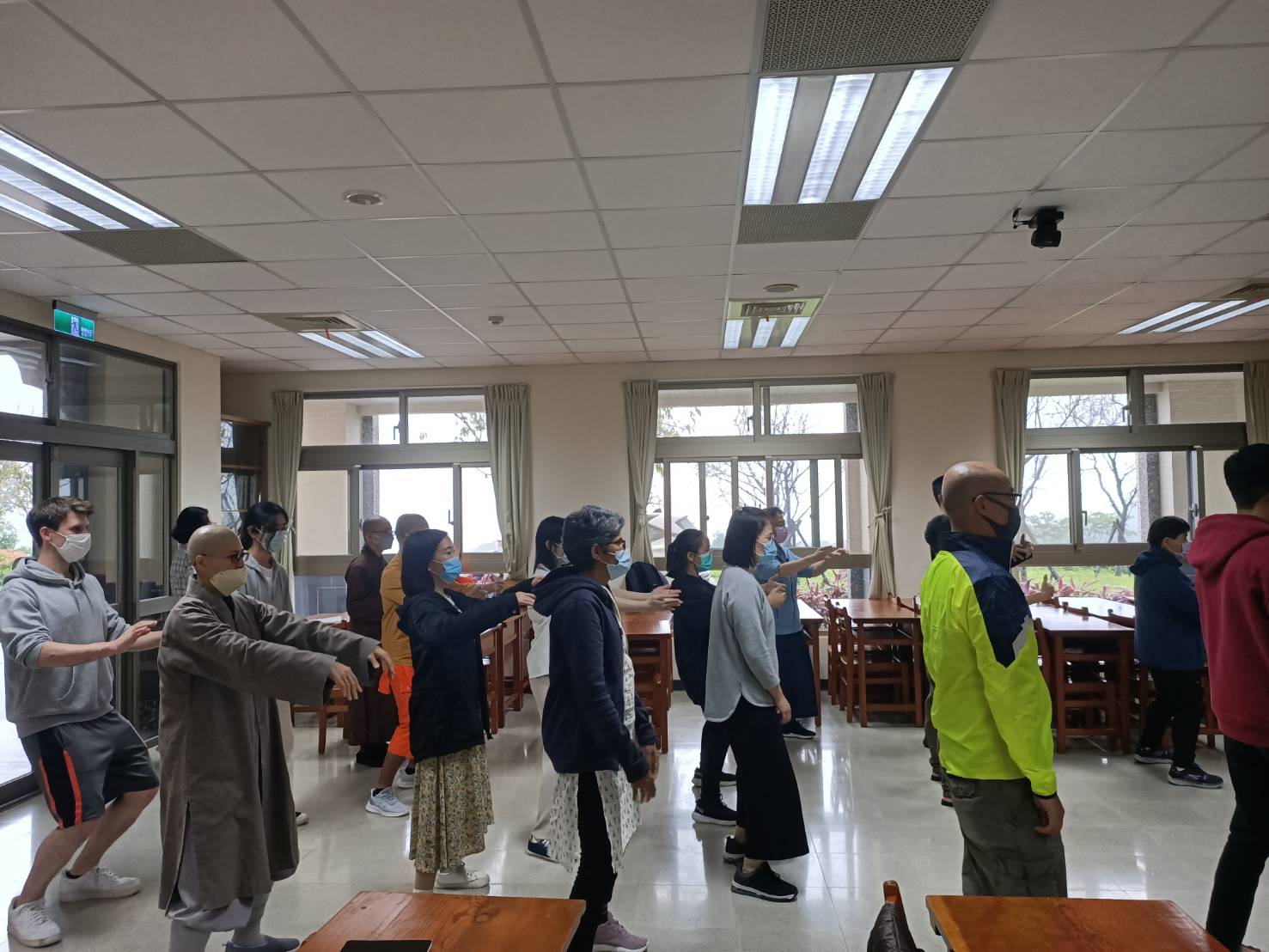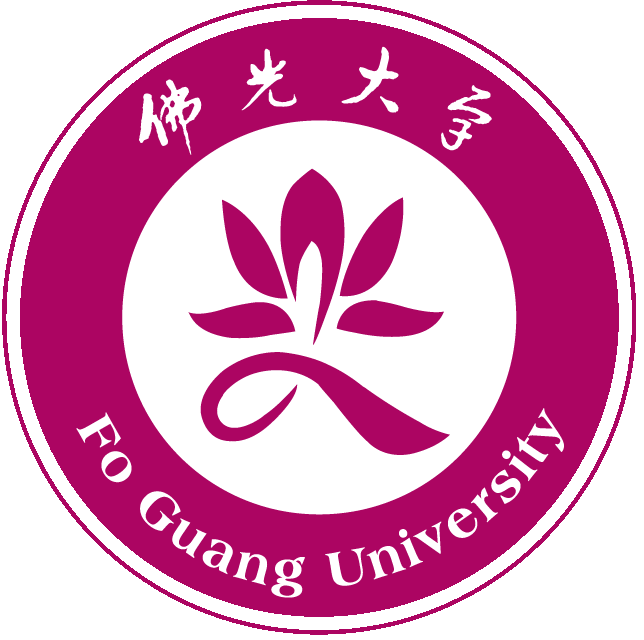地點:雲水軒117教室
講師:官貴中/吳素真

學生心得:
學生1
這次的講座官貴中及吳素真老師將會介紹太極相關的知識,也會帶著大家實際練習太極拳的招數,同時也增進自己的英文語言能力和知識。我以前修過他們的太極拳課,所以這次再見面老師們,很高興。
我極力推薦元門太極拳,對身體跟精神健康很好。養身方面動作上,透過俯仰、屈伸、摟坳、絞轉、虛實開合與重心交替變換。以暢通經絡血管、淋巴及循環系統。增加神經系統之靈敏性。提高各關節肌力與肌耐力的柔韌度。加上 深、長、細、緩、勻的腹式逆式深層呼吸,橫隔膜的上下升降,提升心肺功能。此外,對腸的蠕動也有正面的刺激作用。
養心方面行拳時。練習中正安舒,心靜體鬆,精神內守。精神上追求恬淡虛無,寧靜致遠的境界,同時能調節身心和諧平衡,以達養心定性。
學生2
我對太極拳拳理的認識,以前的太極拳是怎樣的我不知道,也沒有考證過,但根據現在我們練的東西,我認為太極拳拳理在格鬥中最直接的應用環境類似摔跤+擒拿,是貼身纏鬥的一種。太極拳拳理的精華在控制重心,初學者控制自己的重心讓自己不容易被摔倒,再進一階可以控制對方重心,讓對方摔倒,最後達到對重心運行規律極為熟悉並通過本能反應控制重心的境界,纏鬥中不經過思考就可以摔倒對手。我覺得這就是太極拳理論的「見自己、見眾生、見天地」,也是「由招熟而漸悟懂勁,由漸悟懂勁而階及神明」。
最後,再說到太極拳的文化。一句至理名言這麼說:「人只有兩只手兩只腳,所以天下所有的格鬥技都大同小異」,那麼區分不同拳法的關鍵是什麼呢?我認為是文化,太極拳能夠申遺,我認為其文化成分佔多數,他結合了中國的道家的陰陽中庸思想、融合了上善若水的理念,而正是這個思想理念讓它有了中國特色,所以學習太極拳不可以不學習太極文化。
學生3
今天是十一月而二日的雲水書院第五場講座,這次的講座是請官貴中及吳素真老師,來談及教導太極相關健康知識,帶著我們實際練習太極拳,同時也增進我們的英文語言能力。
因為這些太極拳的內容我們並不太了解,只能就印象中的記憶來寫心得。
我覺得這場講座非常好,帶給我們很多不懂或錯誤的觀念的改正的幫助。如果只是會打太極拳,只是套路,還要會練功的心法,才能回到道家的逆修養生,而且是要點滴累積,從低頻到高頻,是需要時間養成,無法跳躍。身體本身的修行,有動力~即接受,有阻力是即執著。大致上身體是夏放,秋收冬藏,春天是釋放能量,節氣時令有出場與進場,應吃當季本土的食物,今冬北風,是有邪風,會偏頭痛。最後教我們練站
馬樁,即氣功的導引,很精彩,卻覺得時間過很快,意猶未盡,很期待下次再相逢。很感恩。
學生4
Actually I learned Tai Chi Chuan a long time ago, but I have never practiced that. I think every teacher has his or her own style of teaching, they can teach the same thing but in different ways.
This teacher started to explain the history of Tai Chi Chuan. That is kind of interesting to me. Before I usually thought Tai Chi Chuan history was about two hundred years old only, however, it was way longer than that. Moreover, the teacher also explains some theory of Tai Chi Chuan, and the mind's connection with environment and food. That is also an interesting part for me. It seems Tai Chi Chuan uses a lot of Taoism thought and philosophy. He explained that food is an important part of our body, we should take the local food, local food is something most fit for local people. The tomato from the local area can help to clean your body’s poison. In fact, those imported foods from overseas created lots of carbon footprints and despicable plastic trash. People should try to eat local food as much as they can, which is better for the environment and body.
In conclusion, this is a good course to learn about the theory of Tai Chi Chuan. Although I did not have much time to practice in class.
學生5
I remembered when I was around 10, my mom brought me to learn Tai Chi Quan, the traditional Taoist martial arts.
At that time, I only managed to practice the movements but not the regulating of qi in the inner body as I didn't understand its principles on how to combine the two. I quit after taking several lessons.
As time goes by, my body is getting weaker. I started to pay attention to information about fitness, eg.Tai Chi and Yoga.
Last Wednesday, my classmates and I attended this talk about Tai Chi Chuan: An ancient wisdom on exercise and health promotion from the East.
The speaker, master Kuan and his wife, explained slowly and carefully on the acupuncture points, the theories of how the physical movements, breathing and mind focusing that could lead to the qi flow in the inner body, channel and activate the meridians, open the closed acupuncture points in order to help gather essence in our five viscera and six internal organs.
We paid full attention to the theories and practiced the movements almost towards the end of the talk. It's really fun.
Although there was insufficient time, we still benefit a lot.
In my opinion, no matter what type of martial arts that we choose to practice, most importantly is our willingness to embrace the changes forced on us by aging and injury. Through practicing, we develop greater mindfulness and self-awareness, inner self-cultivation and health. Looking forward to attending more similar talks in the future.
學生6
元門太極是太極的其中一種,很幸運能夠在學校裏面有一個初步的體驗。其實太極是一種適合不同年紀的人來學習,這可以讓身體有活動的機會,太極能對應著身體的五臟六腑,能疏通經絡,能強化身體機能及補足虧損。除了可以伸展肌肉,又可以通經脈,調和身體的陰陽。
其實,是次的講座時間很短,只能感受到太極一些很初步的概念,跟穴道、精、氣、神的關係。而站椿更加是一種甚深的學問,如果能天天站椿,身體一定會非常好。
太極亦跟印度的三脈七輪學說有很相似之處。如果以七輪學說來說,站椿就好像七輪中的強化底輪,而百會穴就好像七輪中的頂輪。
學生7
Tai Chi, an ancient Martial Arts, which is active since the Ming/Ching Dynasty. Traditional Martial Arts are usually focused on your body movement with high speed and powerful strength, however, Tai Chi advocates slowing down your movement and breath, relaxing the joints and tendons, and focusing your mind, some parts are totally different from traditional martial arts’ concept.
In this lecture, Master Kuan focus on Qi practice which is very useful to our inner body health. I’m surprised the pattern form of Yuanmen Tai Chi is very beautiful. It’s good for performance and presentation.
學生8
第一次看到有太極主題的講座。一開始因爲英文講座,差一點要退縮不想要聼,但是還好我有堅持去聼因爲原來是有中文的。講到太極我就會很開心是因爲我覺得太極也是可以定心和健康身體的。在講座上有教我們各個穴位。也有教我們各個穴位的功能,就像有幾個穴位是用來驅寒也有驅濕。
在講座的PPT有很仔細的叫我們怎麽做太極的時候應該有的動作或者心境。老師和翻譯老師有用「例子」讓我們更瞭解太極所説的收和放。因爲太極很注重收和放,爲什麽注重呢?是因爲練太極有時候會只是練「放」。那「放」什麽呢?老師説練太極有時候是在放我們的元氣,而如果我們只是會「放」不會「收」,那我們會短命。如果我們會「放」和「收」的話,我們可以强健身體是因爲我們有「放」我們體内的元氣,但是我們也有「收」天地的元氣(氣)。「天氣」是很難要被身體所用,我們需要用「地氣」來鎖住「天氣「讓「天氣」能爲我們所用。老師也有帶領我們做三個太極的「式」。很希望下一次還有這個主題的講座。
學生9
這次的元門太極講座,之前實在演講前就對這個主題非常有興趣,因為周遭的親朋好友有人學過,以及正在學習的。剛好這次的演講又是特別為英文組的同學所舉辦的,沒想到那天竟然來了超多的人,看來大家都對於太極這門功夫非常感興趣。
講師大概在前一個半小時都在講解關於我們中國道家是如何養「氣」的,所以我很希望多聽一點,但他們光是整個粗略的講完一遍後,時間也差不多不夠了,講師還很熱心想要繼續往下補充,我當然是很樂意想要多聽一點,不過最後還是做了一些實作的練習,來當作帶給大家的體驗。後來也聽說原來他們元門太極原來在我們佛光大學已經開課開了非常多年,這學期的時間是在禮拜一的早上,不過礙於這學期我剛好在那個時段有課,所以如果想學的話可能就要等下學期了。


